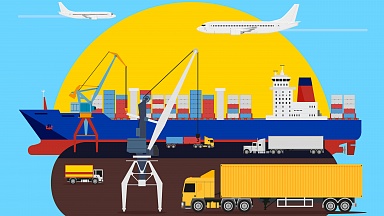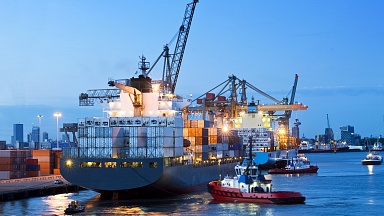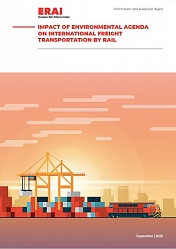Shipping lines have been regularly updating customers on the status of empty-container depots and the availability of line haulage, but have little visibility of how intermodal capacity will look when the lockdown ends.
«We are in unchartered waters, and I think it will be a ‘suck it and see’ situation we will have to monitor closely,» one carrier contact told The Loadstar.
In keeping with China’s zero-Covid strategy, Shanghai, a city of 25m inhabitants, was put into strict lockdown on 28 March, to combat the sharp rise in Omicron cases.
A new joint research paper from maritime AI company Windward and research and analysis firm Sea Intelligence, The Day After in Shanghai, reviews issues that will confront supply chain planners post-lockdown
«If you are a supply chain planner, you are asking yourself a lot of questions, and many of them will be difficult to answer,» says the report, noting that «ocean transport is only one component».
Indeed, before stymied orders can get to Shanghai port, shippers will face manufacturing backlogs, full warehouses, equipment and trucking shortages and, inevitably, landside congestion.
«Will there be sufficient raw materials and labour to restart production?», asks the report, which questions whether intermodal systems will be able to cope with the wave of frustrated exports.
«Will containers be stuck in long lines at the port because of the mad dash to get boxes gated-in from all over the Shanghai catchment area, combined with insufficient export operations space?» it asks.
The report notes that analysis firms have estimated it could take between one and two-and-a-half months to clear the backlog at the world’s biggest container port, but suggests assumptions used for these calculations are «overly optimistic».
It says the estimates suppose «everything else in the Shanghai hinterland functions as smoothly as it did prior to the lockdown, and that’s a big assumption».
It adds: «The port has technically remained open and functional, although it has largely handled prepositioning of empty containers in anticipation of the opening, as well as reefer and a few dry imports. Export containers through the port, on the other hand, have been few indeed, as the rules imposed on truckers bringing those boxes to the port have rendered their operations practically impossible.»
Moreover, it says that when Shanghai does fully reopen, the port could be swamped with container imports of raw materials urgently needed by starved factories in the hinterland.
«Export containers will consist of goods produced before or during the lockdown, but held up in export facilities at factories or elsewhere,» explains the report, although admitting there is no way of knowing how many containers were already stuffed and ready to move. But it suggests «it is safe to say the amount is substantial».
And it asks: «What will happen at the destination gateway ports, where both trucking capacity and importers’ ability to turn the boxes quickly is also highly questionable, first in the US and now also in Europe?
«Port congestion and global supply chain issues are complex and require a much closer look than simply counting the number of vessels outside ports,» says the report.




